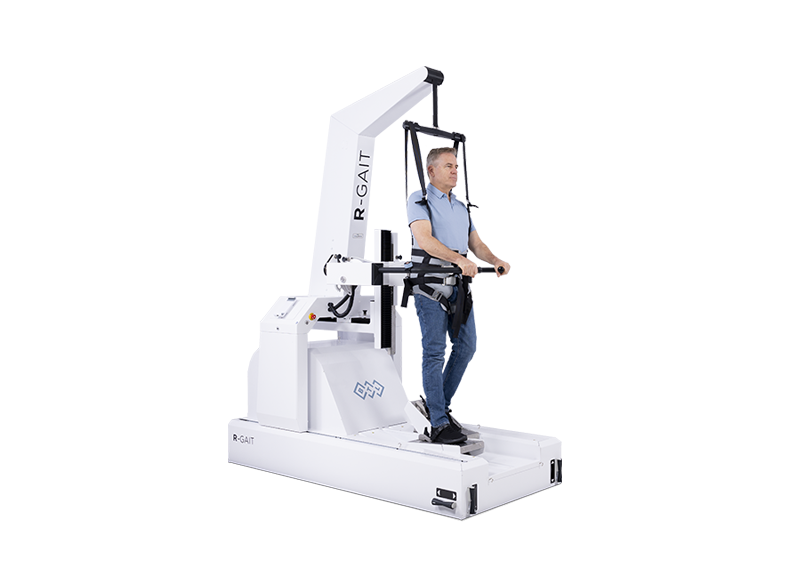R-GAIT
GAIT RESTORATION AFTER STROKE
GAIT RESTORATION AFTER STROKE
R-Gait is an end-effector type of robotic device that re-educates the patient to walk in the most natural gait pattern. The end-effector type of gait training replicates the natural gait pattern principle by employing foot plates equipped with sensors. These assist the patient in the extension of the metatarsal phalangeal joints and stimulate the propulsion phase of the foot as during the natural walking sequence.
R-Gait encourages precisely dosed gait re-education in a safe environment, making it suitable even in the first recovery stage. R-Gait is suitable for adult and paediatric patients from a height of 80 cm.

Real-time gait biofeedback is used to improve biomechanical impairments in post-stroke and other neurological patients' walking patterns.
Data from treatments may be saved in exportable gait reports, and both the therapist and the patient can observe useful therapy information to track and evaluate progress.

Get in touch with us if you want the newest technology to improve patient care.
The content of this website is intended for informational purposes only. Not all products and indications are licensed in your country.
The BTL's product portfolio consists of the following products and respective models: BTL-6000 FSWT, BTL-6000 RSWT, BTL-6000 Super Inductive System, BTL-6000 High Intensity Laser, BTL-6000 TR-Therapy, BTL-6000 Traction with BTL Spinal Decompression PREMIUM / BTL Spinal Decompression PROFESSIONAL / BTL Spinal Decompression ESSENTIAL, R-FORCE PRO / R-FORCE ELITE, BTL-4000 Smart / Premium, BTL-4000 Premium + BTL-Vac II, BTL-4000 Smart / Premium, BTL-6000 Shortwave, BTL-6000 Microwave, BTL-CPMotion, BTL-6000 Lymphastim, BTL-1100, BTL-1300, BTL-1500,
BTL-3000 types: ALFA 10, ALFA 20, DELTA 10, DELTA 20, OMEGA 20, KAPPA 10, KAPPA 20, BETA 10, BETA 20, THETA 10, THETA 20, ZETA 10, ZETA 20.
For more information, contact your local representative.
We will contact you as soon as possible.